How to turn on a Bosch dishwasher and start the wash
 Operating a Bosch dishwasher is no more difficult than operating any other household appliance. The dashboard is adapted even for users who see the PMM for the first time. However, before turning it on, it is important to understand the capabilities of the device in order to ensure the highest possible washing quality.
Operating a Bosch dishwasher is no more difficult than operating any other household appliance. The dashboard is adapted even for users who see the PMM for the first time. However, before turning it on, it is important to understand the capabilities of the device in order to ensure the highest possible washing quality.
All information on how to turn on a Bosch dishwasher, what programs are in memory, how to install and connect to communications, is presented in the instructions for the equipment. This is why it is so important to read the user manual. Let's look into the nuances.
Why the special first launch of PMM Bosch
Having bought a new PMM, you don’t need to immediately try it out. The manufacturer Bosch recommends that the first start of the dishwasher be done empty, without dishes in the chamber. A test cycle is required to:
- wash the inside of the machine to remove factory grease, dust and dirt;
- check whether the dishwasher is installed correctly, whether it is leaking, and whether water is being drawn in and heated. Having identified a malfunction, it will be easier to eliminate it at the test cycle stage - the user will not have to unload the dishes from the washing chamber.
The first start of the PMM is carried out without dishes in the working chamber, but detergent is added to the dispenser.
The detergent will help wash away dirt from the internal parts of the machine. Also, before using it for the first time, be sure to pour special regenerating salt into the dishwasher. We will discuss further what these granules are needed for.
Understand water hardness
It is very important to know the hardness of tap water in the region where the dishwasher will be used.A number of Bosch models come with special test strips that can be used to measure the indicator. The indicator is lowered into the liquid for a few seconds, after which its color is assessed.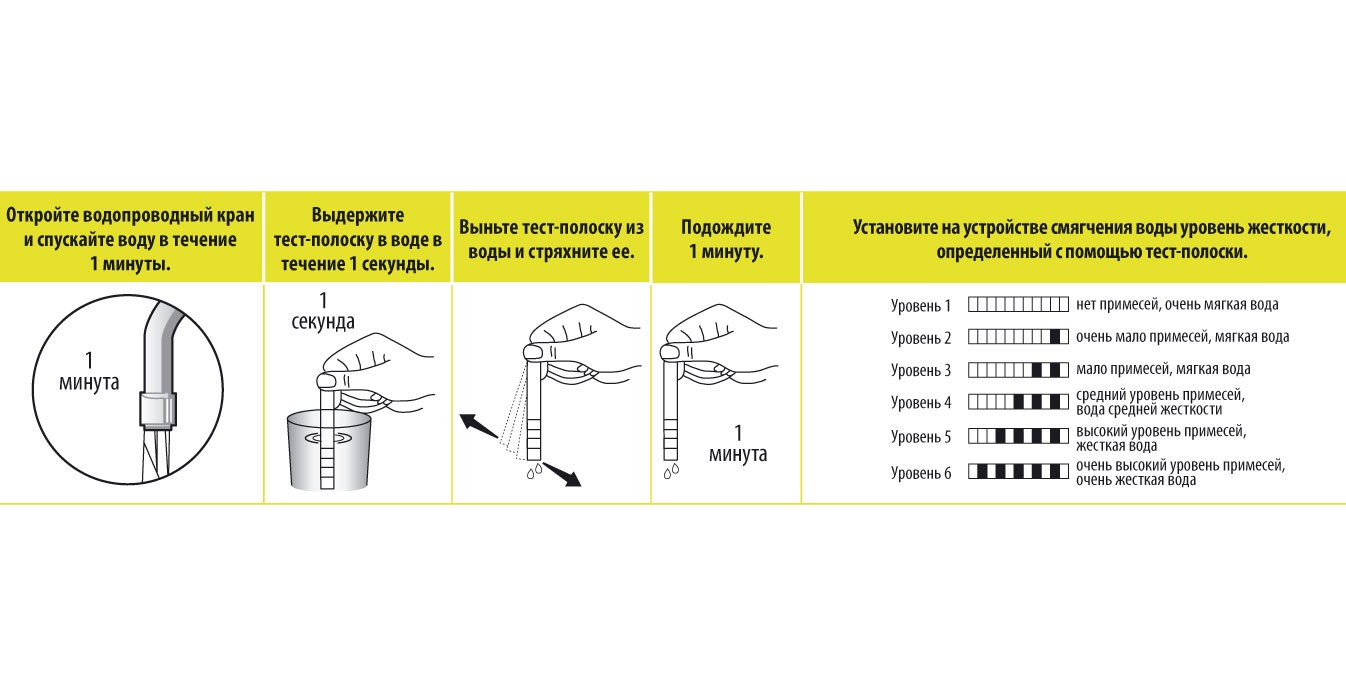
Next, the shade is compared with the table presented in the instructions for the dishwasher. Depending on the water hardness in the region, the Bosch PMM softener is adjusted. If test strips are not included in the kit, you can buy them separately, or check the indicator by calling the city Vodokanal service.
The process of setting up the softener is described in detail in the instructions for the dishwasher. It is necessary to set the correct position of the handle, focusing on the stiffness indicator. Then the PMM will consume salt in the required amount.
Activating the machine for the first time
Before starting the washer for the first time, be sure to add regenerating salt to the machine. You can buy the product at any supermarket or purchase a starter kit right away, along with the dishwasher.
Salt is poured into the PMM as follows:
- open the dishwasher door;
- remove the lower basket to gain access to the container located at the bottom of the washing chamber;
- unscrew the reservoir cap;
- fill the container with water to the top mark;
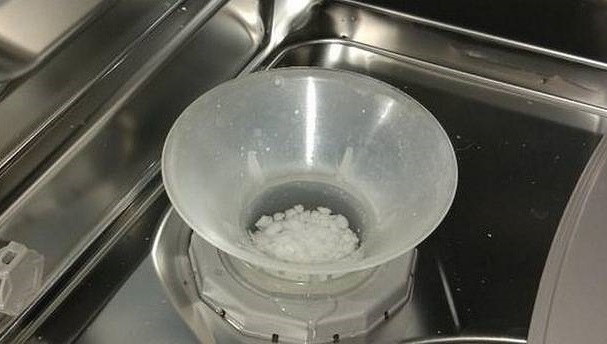
- pour regenerating salt into the container;
- screw the compartment lid tightly;
- Wipe the salt water from the bottom of the wash chamber (it will be squeezed out of the reservoir when you add salt).
Water is poured into the salt container only once. During further operation, it will be enough to simply add salt to the tank. The presence of granules in the container is indicated by a special indicator on the control panel of Bosch machines.
Salt is poured into the container using a special funnel. Usually the device comes with a dishwasher.If there is no watering can, use a regular cup. The tank holds 1-1.5 kg of salt granules - this depends on the PMM model.
Then you need to open the water supply tap and plug the PMM power cord into the outlet. Now everything is ready to run the dishwasher for the first time.
Why do you need a starter kit?
When registering the sale of a Bosch dishwasher, consultants offer buyers the opportunity to purchase a starter kit for the machine. This includes all the tools that will be needed during the operation of the PMM. Of course, you can also choose them yourself, giving preference to other brands of household chemicals.
Often, purchasing a starter kit for PMM is cheaper than purchasing its components separately in other stores.
The starter kit includes three products:
- dishwashing tablets;
- rinse aid;
- regenerating salt.
The advantage of starter kits is that they contain funds from one manufacturer. That is, their components are well compatible, which means it will be possible to achieve high quality washing.
In addition to basic products, during operation of the PMM you will need a special cleaner. This composition is used once every 2-3 months to wash the inside of the machine from grease, dirt and scale. Some users additionally use flavorings - but this is not necessary.
Purpose of salt
Hard water is the main enemy of a dishwasher. It promotes the formation of scale on PMM parts and also impairs the quality of cleaning dishes. Salt helps soften the water, bringing it to such a state that the results of the equipment will please the owner.
Special dishwasher detergent should not be confused with regular table salt, which is found in any kitchen. Only regenerating salt can soften hard water.Therefore, you should not save and try to replace it with a food “analog”.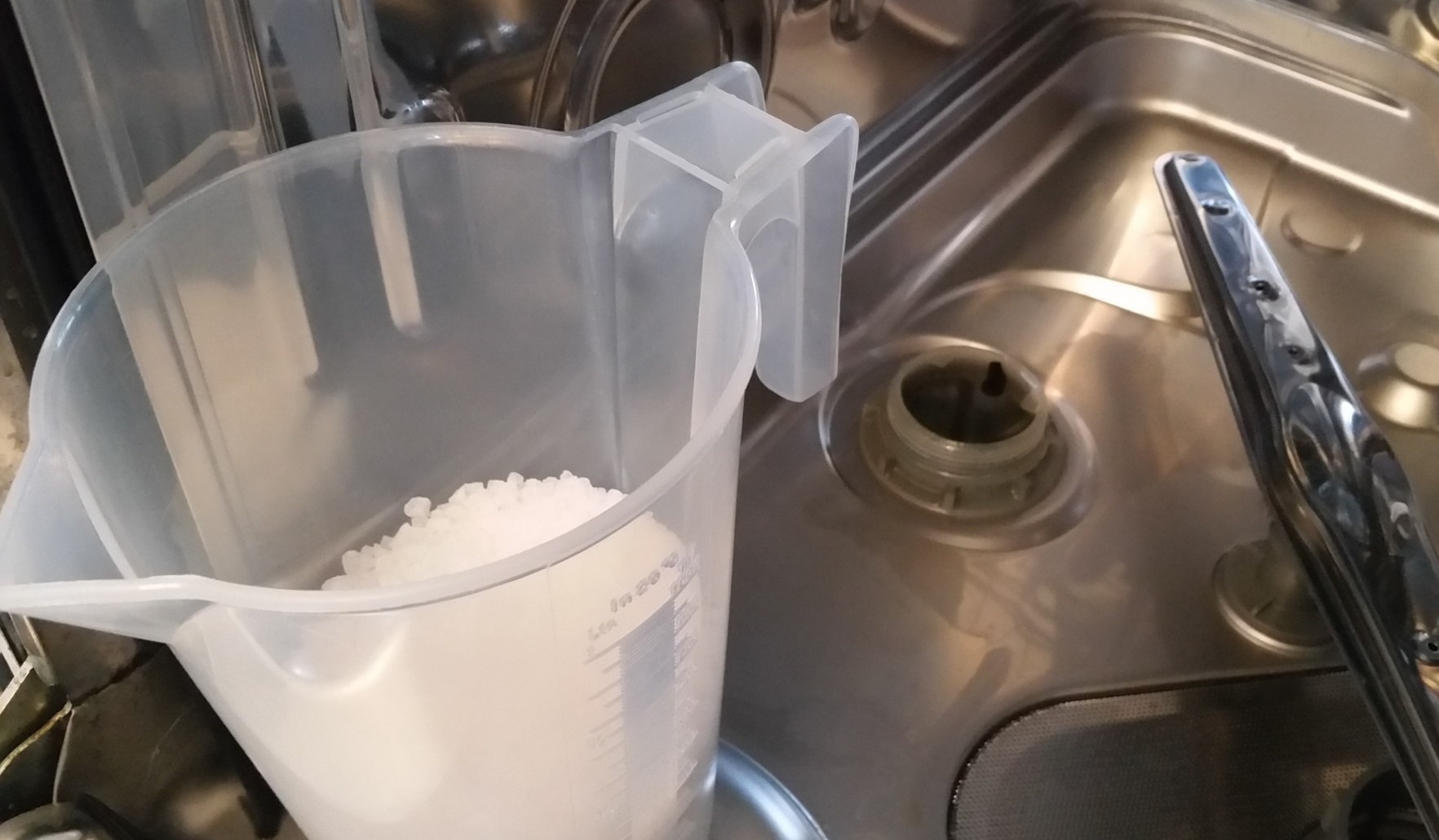
If the water in the region where the dishwasher is used is soft, then salt may not be used. In such a situation, there is no need to further soften the liquid.
Special dishwashing detergents
In Bosch machines you can use any commercially available dishwasher detergent. There are no restrictions on manufacturers or components included in the composition. It can be:
- pills;
- powders;
- gels.
The only limitation is that it must be products designed specifically for dishwashers. Do not use formulations that are intended for washing dishes by hand.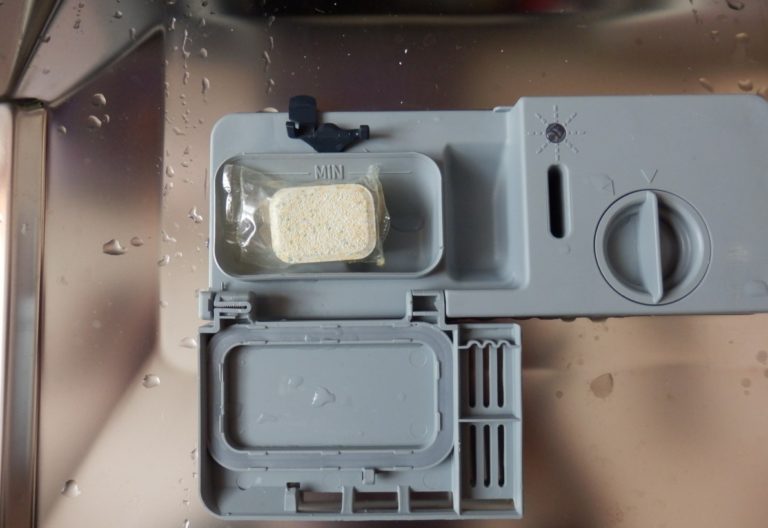
The range of household chemicals for PMM is amazingly diverse. All products, depending on the components they contain, are divided into three groups:
- with chlorine and phosphates;
- without chlorine-containing elements, but with phosphates;
- without chlorine and phosphates.
It is necessary to select a product based on the expected result. The absence of chlorine will not give the desired effect when dishes need to be bleached. Therefore, it is better to use chlorine-containing compounds to clean tea or coffee cups.
The absence of phosphates in the composition can lead to the formation of a white coating on dishes and the walls of the washing chamber. You can avoid such consequences by simply increasing the consumption of detergent.
Is it necessary to use rinse aid?
The rinse aid enters the working chamber at the last stage of washing. It creates an invisible thin protective film on dishes, prevents the appearance of stains on items, and ensures their faster drying.
If you do not use a rinse aid, then unsightly stains will remain on the glass and crystal dishes.Also, the cutlery will not shine. The composition is inexpensive. The liquid is poured into a separate compartment, which is located next to the detergent dispenser.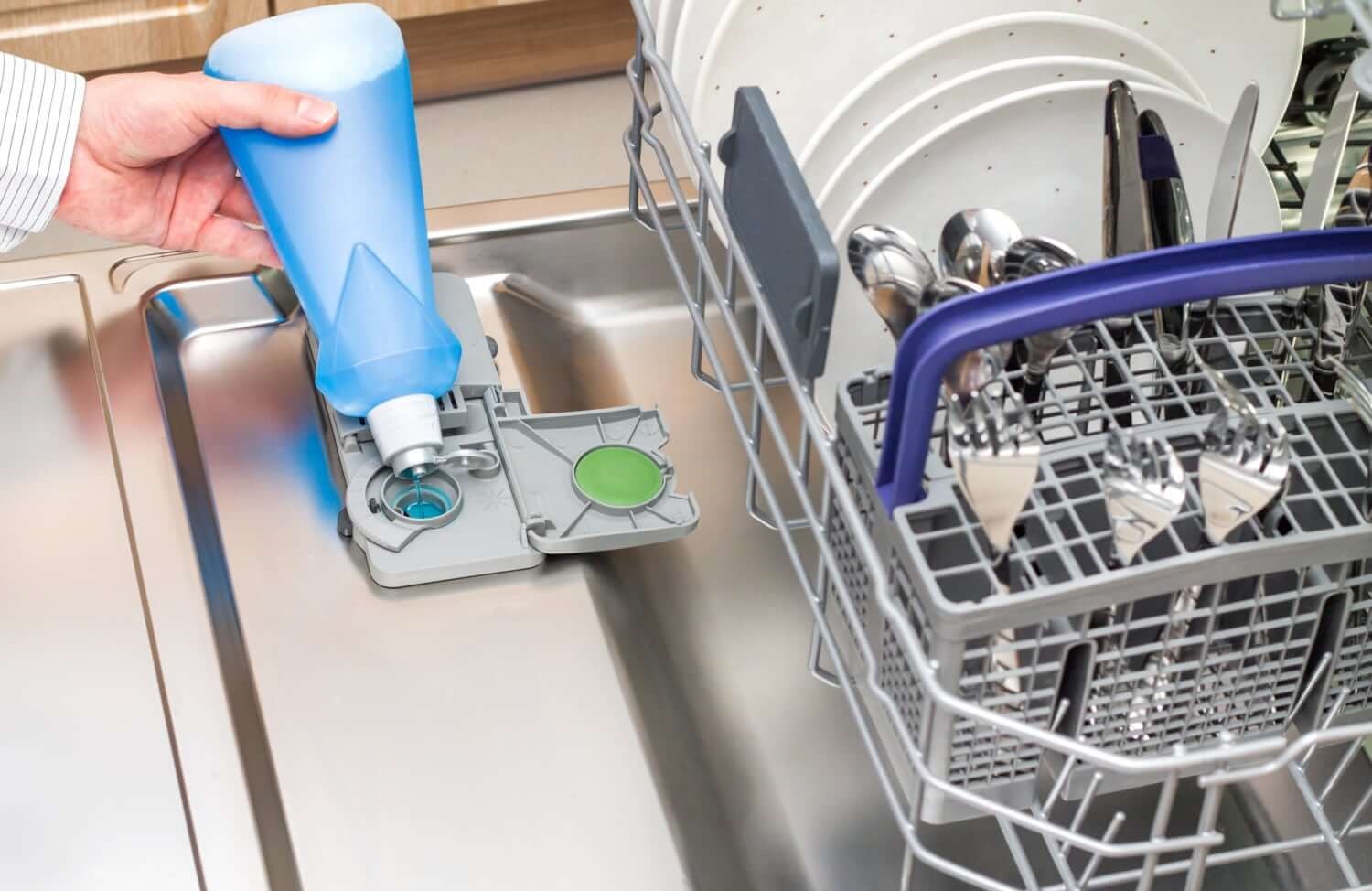
The rinse aid consumption is adjusted manually. First, the wash is started with factory settings. If a white coating remains on the dishes and they are dull, the dose will have to be increased. Excess composition is expressed by rainbow stains on pots and saucepans, as well as stickiness of cutlery.
Placing dishes in baskets
The washing result greatly depends on how well the dishes are arranged in the baskets. There are certain rules for loading plates, cups, forks, spoons, pots and pans into PMM trays. If you violate the recommendations, the cycle efficiency will be low.
In the washing chamber of the machine there are sprayers from which liquid pours out. The dishes should not interfere with the rotation of the rocker arms, otherwise the circulation of water in the system will be disrupted. Also, do not block the opening valve of the detergent dispenser.
Before loading dishes into the machine, make sure they are suitable for this type of processing. Some products do not tolerate prolonged contact with water and exposure to high temperatures. This is about:
- wooden and cast iron dishes;
- products made of non-heat-resistant plastic;
- devices with wooden or mother-of-pearl handles;
- utensils made of copper, aluminum and bronze.
Before loading into the machine, clean the dishes from dried-on food residues.
Some Bosch dishwashers have a soak function. It is ideal for processing pots, pans, baking sheets. If there is no such option, be sure to first clean off the burnt or dried layer with a special brush. You can buy it at a hardware store.
To increase washing efficiency, you can pre-treat the dishes with hot water. For example, lay it out in the sink and open the tap. Due to this, the fat on the surface will become wet, and it will be easier for the machine to handle it.
To place dishes in Bosch machines, there are two boxes, upper and lower. There are three types of baskets:
- Vario;
- Vario Flex;
- Vario Flex Plus.
The differences between the boxes are in the number of mobile and folding elements provided by the design. The Vario Flex and Vario Flex Plus baskets are equipped with additional protection for fragile dishes.
The number of dish baskets depends on the dishwasher model. Some PMMs have two, others have three. The third level is provided for cutlery and products of non-standard sizes.
The Rackmatic system allows you to adjust the position of the dish boxes. If you need to place oversized items below, the upper basket can be raised. Special clamps are provided to secure wine glasses and glasses.
Recommendations for arranging dishes are presented in the instructions for the Bosch PMM. In general, the top box contains:
- mugs;
- coffee cups;
- glasses;
- gravy boats;
- saucers;
- wine glasses;
- shoulder blades;
- other small cutlery.
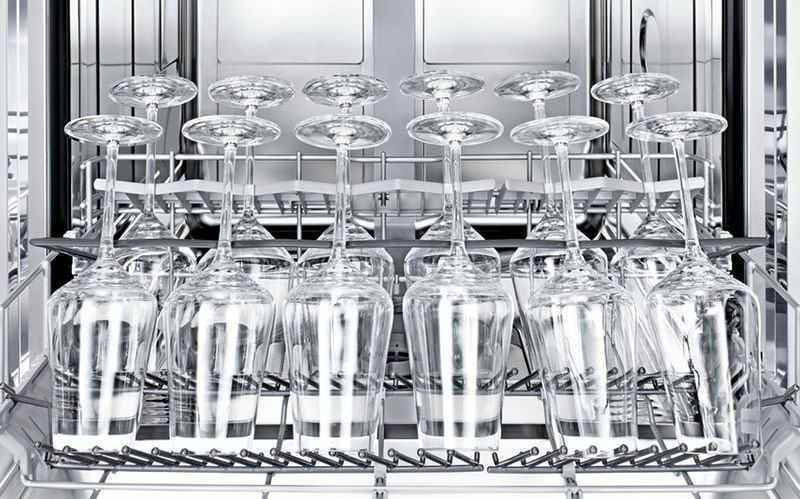
The lower basket should be loaded with:
- serving plates;
- pots;
- stewpans;
- baking sheets;
- frying pans;
- lids and other large items.
Deep items (soup plates, mugs, pots) should be placed bottom up. This is necessary so that water does not accumulate inside, but flows calmly from the walls. Do not stack dishes on top of each other. It is necessary to leave a gap between the plates so that the liquid washes them from all sides.
Monitoring the state of the PMM
Your dishwasher needs to be maintained.By following a few simple recommendations, you can extend the life of your equipment. Firstly, you need to periodically clean the PMM using special products. There are inexpensive cleaners from the brands Finish, Somat, etc.
Experts recommend using a cleaner for PMM at least once every three months.
Secondly, be sure to clean the PMM filter unit. The mesh collects food debris, fruit pits and other debris. If you do not remove dirt, the filter will become clogged and water circulation in the system will be disrupted.
Thirdly, you need to wipe the inside surface of the washing chamber dry after each use of the device. Be sure to leave the dishwasher door ajar for ventilation. The detergent dispenser needs to be cleaned periodically.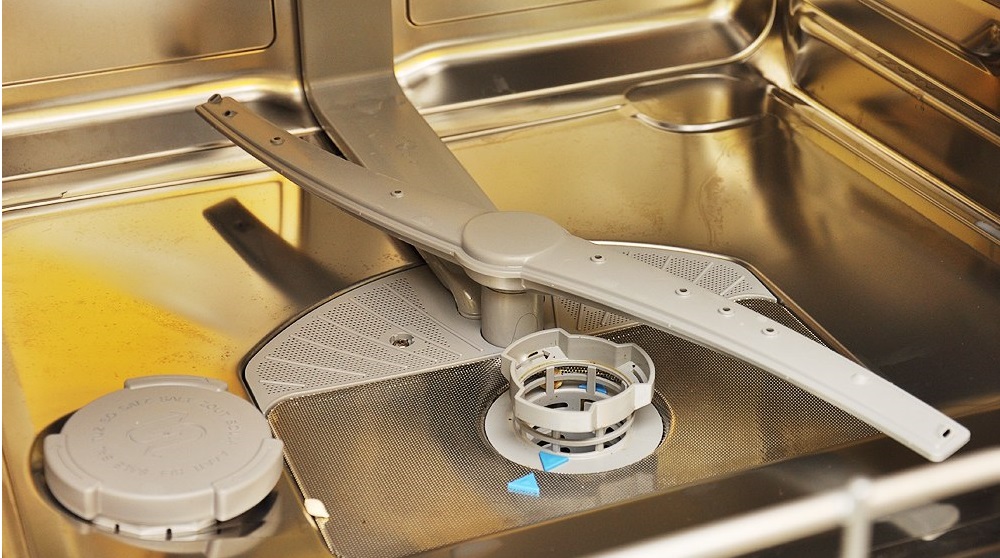
Users also need to monitor the condition of individual parts of the PMM:
- rocker arms;
- sprinklers.
If you notice scale or grease deposits on the surface of parts, you need to clean the machine using a special product. Once every 3-4 months, sprinklers must be removed and washed under running warm water to remove food debris.
By following all care recommendations, you can extend the life of your dishwasher and also increase its efficiency. The rules are quite simple, so you shouldn’t neglect them.
Interesting:
Reader comments
- Share your opinion - leave a comment


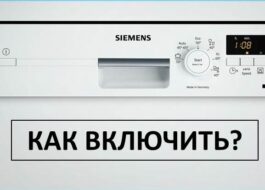
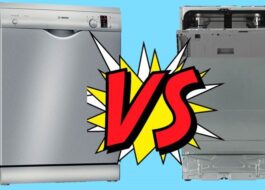
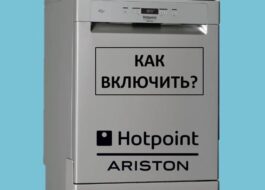
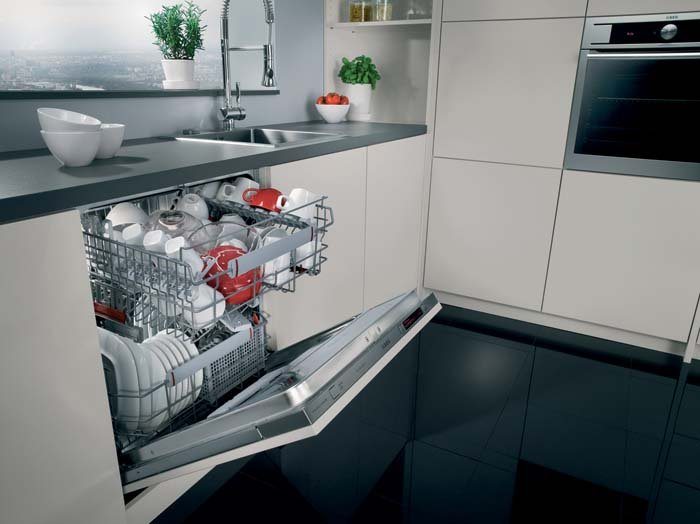















Add a comment